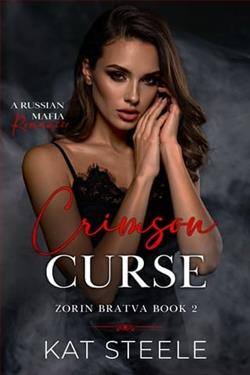Page 110 of Lock Every Door
Le Calice D’Or.
That was the name of her group of followers.
The Golden Chalice.
I flip back a hundred pages, locating a telling passage about Marie Damyanov.
While times of strife cause many to seek solace in their faith, it also forces others to consider the option of appealing to a satanic messiah, especially during eras marked by extreme warfare or plague. Damyanov believed that after forming the heavens and the earth, God abandoned his creations, allowing chaos to reign. To endure this chaos, Damyanov advised her followers to appeal to a mightier deity—Lucifer—who could be summoned not with prayers but with blood. Thus began rituals in which young women would be cut, their blood caught in a golden chalice and poured over an open flame.
Years later, some of Damyanov’s disillusioned followers hinted at more horrific practices in letters to friends and confidantes. One wrote that Damyanov claimed the sacrifice of a young woman during a blue moon would summon Lucifer himself, where he would grant those present with gifts of good health and immense fortune. The author ofthe letter then went on to admit that he never witnessed such an act, saying it was most likely a tale created to sully Damyanov’s reputation.
After Damyanov was arrested for indecency in late 1930, Le Calice D’Or disbanded. Damyanov herself faded from public view. Her whereabouts after January 1931 are unknown.
I reread the passage, my sense of unease intensifying. I try to recall details of the Cornelia Swanson case. Her maid’s name was Ruby. I remember that. The Ruby Red Killing. She was cut open, her organs removed. Something like that is hard to forget. As is the fact that the murder took place on Halloween night. I can even remember the year: 1944.
I grab my phone and find a website that gives you the lunar cycle for every month in any given year. It turns out that on Halloween in 1944, the sky was brightened by the second full moon of the month.
A blue moon.
My hands start to shake, making it difficult to hold the phone as I do a new internet search, this time for a single name.
Cornelia Swanson.
A flurry of articles appears, pretty much all of them about the murder. I click on one and am greeted by a photo of the infamous Mrs. Swanson.
I stare at the picture, and the world goes sideways, as if the library has suddenly tilted. I grip the edge of the table, bracing myself.
Because the photo I’m looking at is one I’ve seen before. A sharp-featured beauty in a satin gown and silk gloves. Flawless skin. Hair as dark as a moonless night.
I saw it in the photo album in Nick’s apartment. Although he identified the woman, he never used her name.
But now I know it.
Cornelia Swanson.
And her granddaughter is none other than Greta Manville.
40
I text Dylan from inside the library.
Call me ASAP! I found something!
When five minutes tick by and he doesn’t respond, I decide to call him. A theory is forming. One I need to share with someone else, if only so they’ll tell me I’m being crazy.
But here’s the thing: I’m not being crazy.
Right now, insanity would be a blessing.
Outside, I lean against the base of one of the library’s stone lions and dial Dylan’s number. The call again goes straight to his voicemail. I leave a message, urgently whispering into the phone.
“Dylan, where are you? I’ve been looking into some of the people living at the Bartholomew. And they’re not who they say they are. I think—I think I know what’s going on, and it’s some scary shit. Please, please call me back as soon as you get this.”
I end the call and stare up at the sky. The moon is out already—full and bright and hanging so low it’s bisected by the spire of the Chrysler Building.
As kids, Jane and I loved full moons and how their light would stream in through her bedroom window. Sometimes we’d wait until my parents went to sleep and stand in the ice-white glow, as if bathing in it.
That memory is tainted now that I’ve read what members of the Golden Chalice allegedly did during full moons. Just like the Bartholomew, it’s another piece of my past with Jane sullied.















